
Thus far, 2020 is turning out to be an interesting start for the new decade. After years of consideration, I’ve finally made the move back to the US. Following New Years day, said move can finally be called complete,

as can the sheer number of 2019’s festivities. Which is to say, after two marriage ceremonies in two different ends of the Earth (note: yes, same person), Diwali, Thanks Giving, Christmas, New Years Eve (and New Years flu!), I can finally get back to working on things! Oh, and updating this blog. I guess we all know what -my- new years resolution is.
So what ‘things’ are in the works?
The Past

Before going into what’s cooking right at this moment, I should clarify for those who have been watching for the last few years; yes, Project: Elysium is still in the works! It could hardly be any other way, following the terrific response we got from the pre-alpha test. I suspect we will be back to working out a new build by mid-summer. Besides general game play and system adjustments (as well as a new level tile set), we are likely to start testing a feature that we’ve been super keen to implement from day one of the project, way back in 2012; co-op!
Here’s the thing; multiplayer is a fairly new horizon for my wife and I.
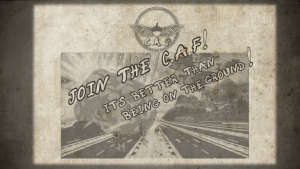
We’ve long discussed it, and even thought about integrating it into ‘Acorns Above: A World Gone Nuts!’ (AWGN) at multiple points. However, it is also the kind of feature that simply could not be tackled with that older project without addressing the quite frankly massive number of issues in its construction. As far as first games go, AWGN was okay, but not our personal best. That’s a matter for another post though.
Today, let’s look at something a little more fresh.
The Crossroad
As mentioned before, co-op and multiplayer are functions Mimi and I are huge fans of. A joint run through System Shock 2 was in fact one of the springboards for the original Project Elysium. A recent run through of Icewind Dale has reinforced the wish to build this in. This brought us to a couple of considerations; do we rip open the current Elysium build and hope we don’t break something in our first attempt at online play? Do we dig into AWGN and contend with an older mess while trying to build something cleaner? Or do we start fresh from ground zero, while also cleansing our creative pallet and refining our work flow, thus better preparing us for the next phase of our journey into Kamesh?
As might be obvious by now, we chose the latter. The real choice was whether to do a remix of AWGN, or revisit one of our older prototypes from 2018.
A little history; right after releasing AWGN, we sat down to think about where we were going next. By that point, we were fairly certain that the original vision for Project: Elysium was flawed, and that it needed a re-work. This led us to tossing some ideas back and forth over what the next project would be. We eventually settled on a re-imagining of that original game, into the form it currently has, but right before that, we played with something very different. That something was the ‘Aeon: Wings of War’ (AWOW) prototype.
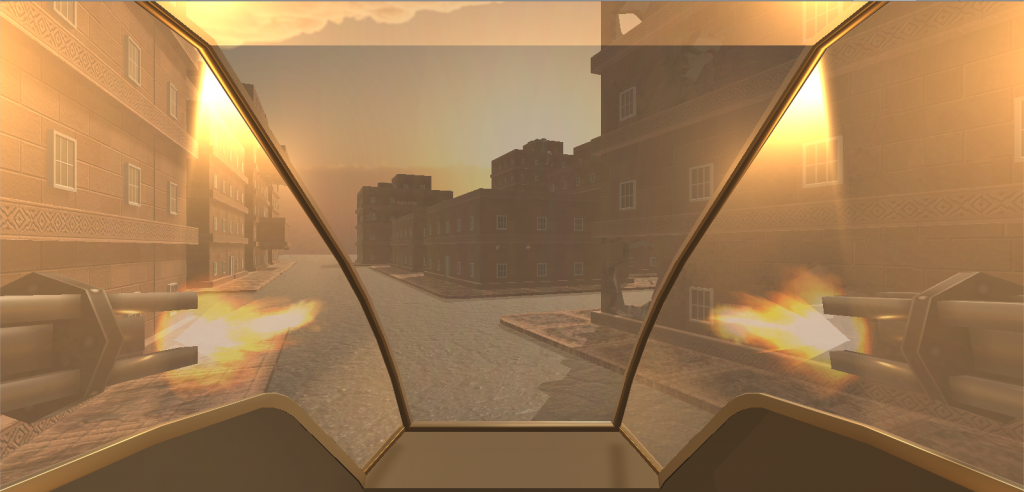
AWOW was being built on a simple premise; WW2 as fought by knights and necromancers. Set in the same Aeon universe we’ve drafted for Elysium, it cast the player in a diesel-punk craft, flying through a destructible city while fighting the legions of a demon worshiping empire. Had we continued with the project, missions would see the player flying over battlefields to take out necromancer towers, and engaging in dogfights that would dynamically level the towns being fought over.
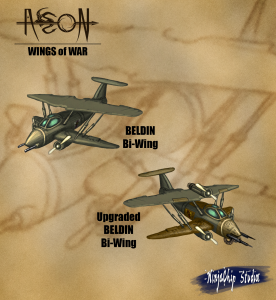
For all intents and purposes, AWOW was actually a pretty major step for us. A lot of the technical design and art workflow actually transferred over to the new take on Project: Elysium. The environmental destruction system and environmental texture structures in particular gave the latter the direction it desperately needed. In fact, AWOW did not come to a halt due to any real problem other than creative choice. Besides our wish to focus on Elysium, we ended up wanting to make more of free-form shooter than a flight simulator. Mechanically, we were building something far more akin to classics like Descent 2 rather than Red Baron, which wasn’t really fitting the whole WW2 aesthetic we were going for. Still, the progress we made was encouraging, so we kept our plans around for a later date.
The Present

Flash forward to late 2019. We were at my in-laws place for Christmas, where we had just started to re-watch Farscape, in between which I was revisiting the space-sim Freespace 2. This is also where we started our return to
Icewind Dale. All three sort of came together to get us thinking about co-op in a sci fi/ fantasy world. A universe where humans are, on the one hand, comfortable on the final frontier. Comfortable, yet faced by an equally unknowable foe, and equally unknowable forces. Not quite a vision where humanity is lonely among the stars so much as faced with real magic; the supernatural which, try as they might, cannot be broken down.
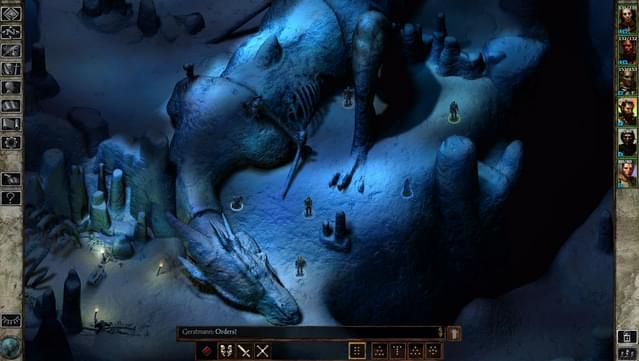
It brought us back to story and game design ideas we had laid out for AWOW, with the additional inspiration from Farscape and Freespace 2. The latter presented an aesthetic adjustment that would allow us to implement that 360-degree freedom of movement without clashing with the diesel-punk motifs.

Which brings us to…
Project: Scavenger
Project: Scavenger is essentially being built with the same objectives that AWOW served. First and foremost; test out new systems (in this case, multiplayer). Second; improve workflows for the bigger Elysium project. Third; to do both without the difficulty of working within the larger project. Additionally, we hope to build this experiment in a way that it becomes playable in our website.
AWOW is more or less our starting point, albeit recast visually from diesel punk to space. Essentially, we will build a micro-FPS in space, with semi-destructible environments (space station structures, asteroids) and online play. To start with, it will be a competitive match. The premise; the players are each competing mercenaries, all poised to attack a a research station in the depths of space. The prize; a strange and ancient artifact with mystical properties. To reach it, players will have to penetrate the stations defenses, while also contending with each other.
There is more to the settings story and world, but at this point, we’re not focusing too much on integrating it. Right now, our focus is on getting the game itself up and running. The good news is that a lot of our basic mechanics (movement, firing, destruction) were already built in AWOW. So the big things we each have to tackle right now are the online systems and the actual art assets.
For me, as always, this process starts on paper.
Designing Junk
The world setting has the human race spread out across multiple exodus fleets, following the destruction of
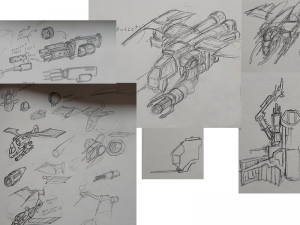
their home world and the release of demons in the universe. Most of these fleets are off searching for a new home, while some have taken to going rogue, making do with what they have. The latter are the groups that the player comes from, so as such, their craft need to reflect this. Which is to say; Jerry-rigged craft, not pristine, full form military jets. The idea was to make ships that look like they were re-purposed construction craft, bearing tech that was bolted onto a chassis it was never designed for.
I started some preliminary sketches with ‘bulk’ and ‘industrial’ as my key words. Early drafts had robotic arms on the ship, themselves actually from an even older space craft I designed back in my 3d schooling days. The idea was for the guns to retract into the arm and have the claws ‘grab’ the artifact, forcing the player to rely on movement to escape once they had the prize. We ultimately scrapped this idea for the moment, both for a game play and development reason. It would take longer to simply make and animate said arms, on top of the game play disruption they might introduce. We may revisit the idea later, but for now, we’re letting players keep firing while dashing off with the prize. The big things that have stayed on are the cockpit and booster engines.
Normally, I would spend more time refining the concept further, especially if I were working with additional team members on the art side. However, in this case, I am the sole person creating all the art, so I have a little leeway here. Additionally, I specifically want this craft to look rough, clunky, and ill-fitting with itself. So once I had the basic chassis- that is, the cockpit, general engine designs, and a rough idea of what the craft -was- before the player got it – I went right to Blender.
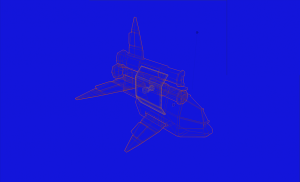
Material Matters
For anyone just starting out with art for games (or any production), again, I must stress; getting right to asset production without fully nailing down the concept art is a BAD IDEA. This is NOT suitable for full productions. I am only doing this because it is a small project, and it is a personal project for my wife and I. In other words, don’t try this at work.
With that said; I am pretty much bolting components on as I go. However, the craft is not entirely unplanned. One of the lessons learned during production for AWGN, and fully worked out in AWOW, was the need to plan out the number of materials at play. This is to help smooth out performance, which will be especially important for a game that is meant to be played in browser. To that end, the plan is to split the craft into four groups; fuselage, machines, windshield and guns. Each of these will invoke their own material sets. For a larger scale production (like Elysium), I would further structure these materials and textures in such a way that they could easily be re-used across multiple objects. For now, I’m okay with laying them out exclusively for the craft.
I’m splitting the materials for a couple of reasons. First; I want each surface to behave in fairly different manners. To an extent, this can be done on a single material, but I don’t particularly want to crowd the UV’s of each model on a single canvas. Again, this is not the ideal way of going about it, but it is quicker than spending a lot of time meticulously cramming in the entire craft on a single page.

(For anyone interested; although I do my modeling in Blender 2.8, I still handle most texturing work in Adobe Photoshop CC. This has more to do with familiarity than anything explicitly lacking in Blender).
By this weekend, the craft should be ready to go into the game, along with a cockpit for the players perspective. Next week, I’ll go into a little more detail about its construction, as well as the animation for the gun itself.
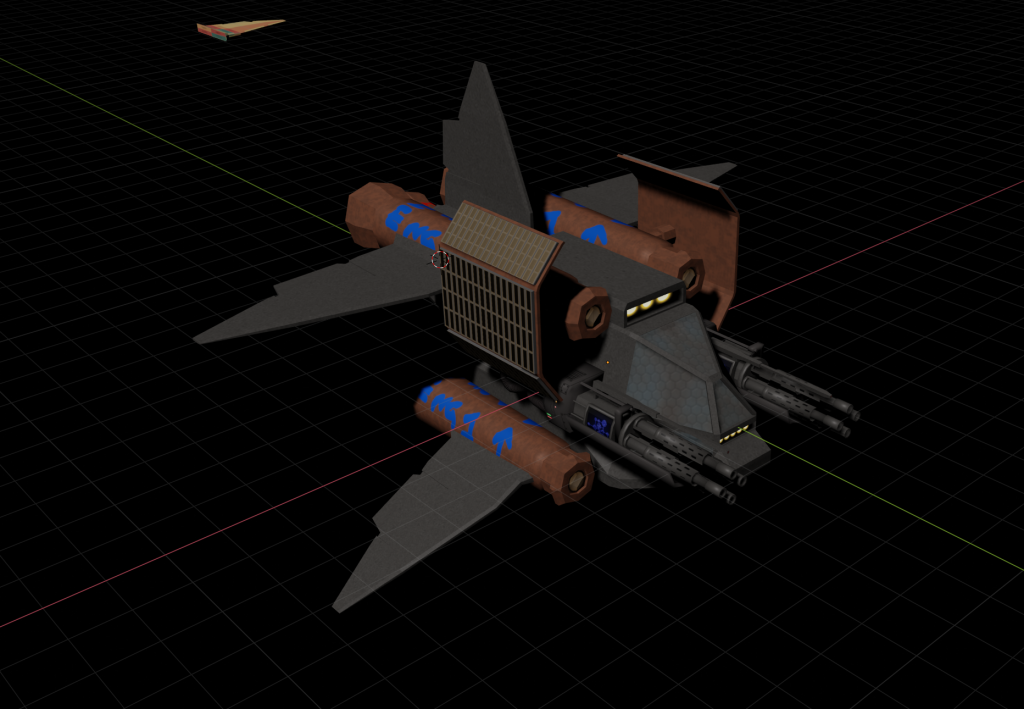

Be First to Comment